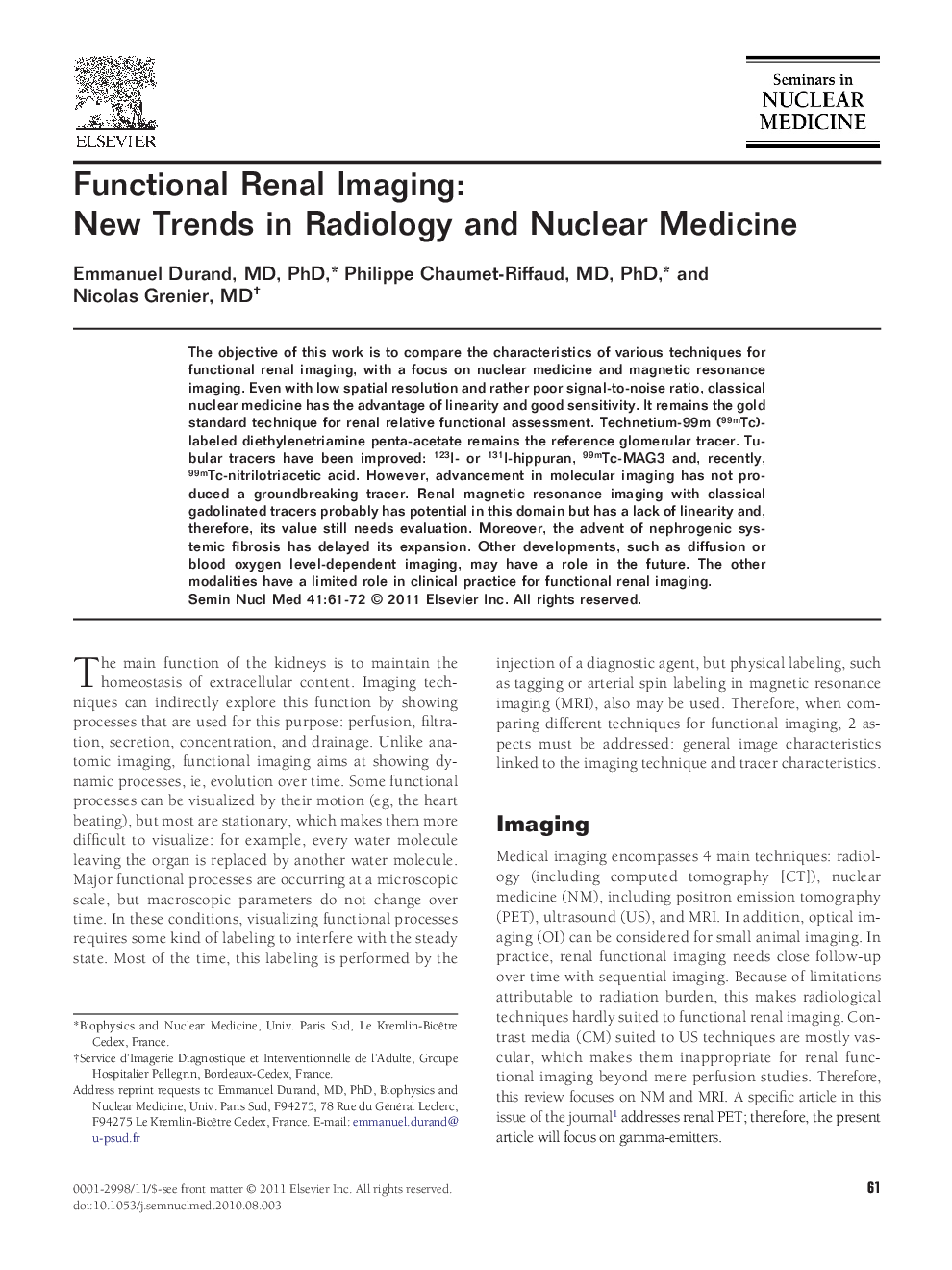| Article ID | Journal | Published Year | Pages | File Type |
|---|---|---|---|---|
| 4251035 | Seminars in Nuclear Medicine | 2011 | 12 Pages |
The objective of this work is to compare the characteristics of various techniques for functional renal imaging, with a focus on nuclear medicine and magnetic resonance imaging. Even with low spatial resolution and rather poor signal-to-noise ratio, classical nuclear medicine has the advantage of linearity and good sensitivity. It remains the gold standard technique for renal relative functional assessment. Technetium-99m (99mTc)-labeled diethylenetriamine penta-acetate remains the reference glomerular tracer. Tubular tracers have been improved: 123I- or 131I-hippuran, 99mTc-MAG3 and, recently, 99mTc-nitrilotriacetic acid. However, advancement in molecular imaging has not produced a groundbreaking tracer. Renal magnetic resonance imaging with classical gadolinated tracers probably has potential in this domain but has a lack of linearity and, therefore, its value still needs evaluation. Moreover, the advent of nephrogenic systemic fibrosis has delayed its expansion. Other developments, such as diffusion or blood oxygen level-dependent imaging, may have a role in the future. The other modalities have a limited role in clinical practice for functional renal imaging.
